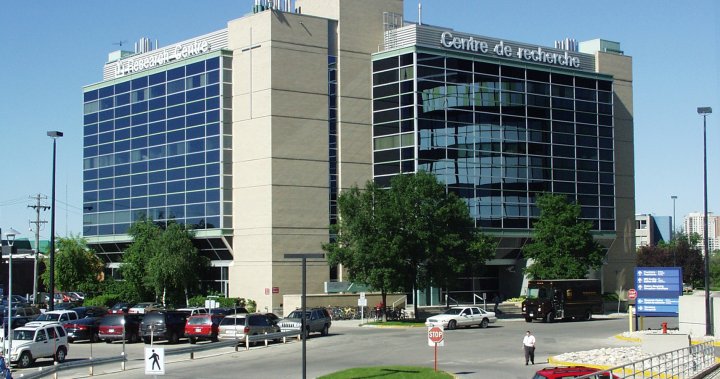St. Boniface Hospital’s research centre experienced a scare when a volatile chemical was discovered during a routine laboratory decommissioning. The Winnipeg Regional Health Authority stated that the chemical appeared to have degraded over time, becoming highly volatile. The substance was originally intended for legitimate research purposes and had been on site for some time. As a precautionary measure, the bomb unit was called in and the Research Centre was evacuated. Police removed and disposed of a small amount of the chemical without incident, and St. Boniface Hospital confirmed that the incident was not related to a bomb threat or other acute emergency.
MRI services at the hospital were temporarily suspended until 7 p.m., but the rest of the hospital’s operations continued as usual. Police ensured that the evacuation process went smoothly, and thankfully no injuries were reported. The Winnipeg Regional Health Authority reassured the public that the substance was not a threat from an intruder or a deliberate act. The incident serves as a reminder of the importance of proper chemical handling and disposal procedures in laboratory settings to prevent potentially dangerous situations like this from occurring in the future.
The discovery of the volatile chemical at St. Boniface Hospital’s research centre highlights the potential risks associated with handling hazardous substances in laboratory environments. The incident prompted the evacuation of the Research Centre and the temporary suspension of MRI services, but no harm was done as police safely disposed of the chemical. The incident reinforces the need for strict safety protocols and regular monitoring of chemical inventories to prevent similar situations from happening again.
The Winnipeg Police bomb unit was called in to deal with the volatile chemical found at St. Boniface Hospital, ensuring that the substance was safely removed and disposed of without incident. The hospital’s prompt response to the situation helped to prevent any injuries or further complications. It is essential for research facilities to have contingency plans in place for dealing with unexpected hazards like this to protect the safety of staff and patients, as well as the surrounding community.
Despite the temporary disruption caused by the discovery of the volatile chemical, St. Boniface Hospital was able to resume normal operations after the incident was resolved. The hospital staff, Winnipeg Police, and the Winnipeg Regional Health Authority worked together effectively to manage the situation and ensure the safety of everyone involved. By following proper safety protocols and coordinating a swift response, they were able to prevent any harm from coming to anyone as a result of the incident.
The incident at St. Boniface Hospital serves as a reminder of the importance of vigilance and thorough inventory management when handling potentially hazardous chemicals in research settings. It underscores the need for ongoing training, maintenance of safety equipment, and regular inspections to mitigate risks associated with storing and using such substances. By learning from this incident and implementing stricter safety measures, research facilities can better protect their staff, patients, and the general public from potential dangers in the future.













